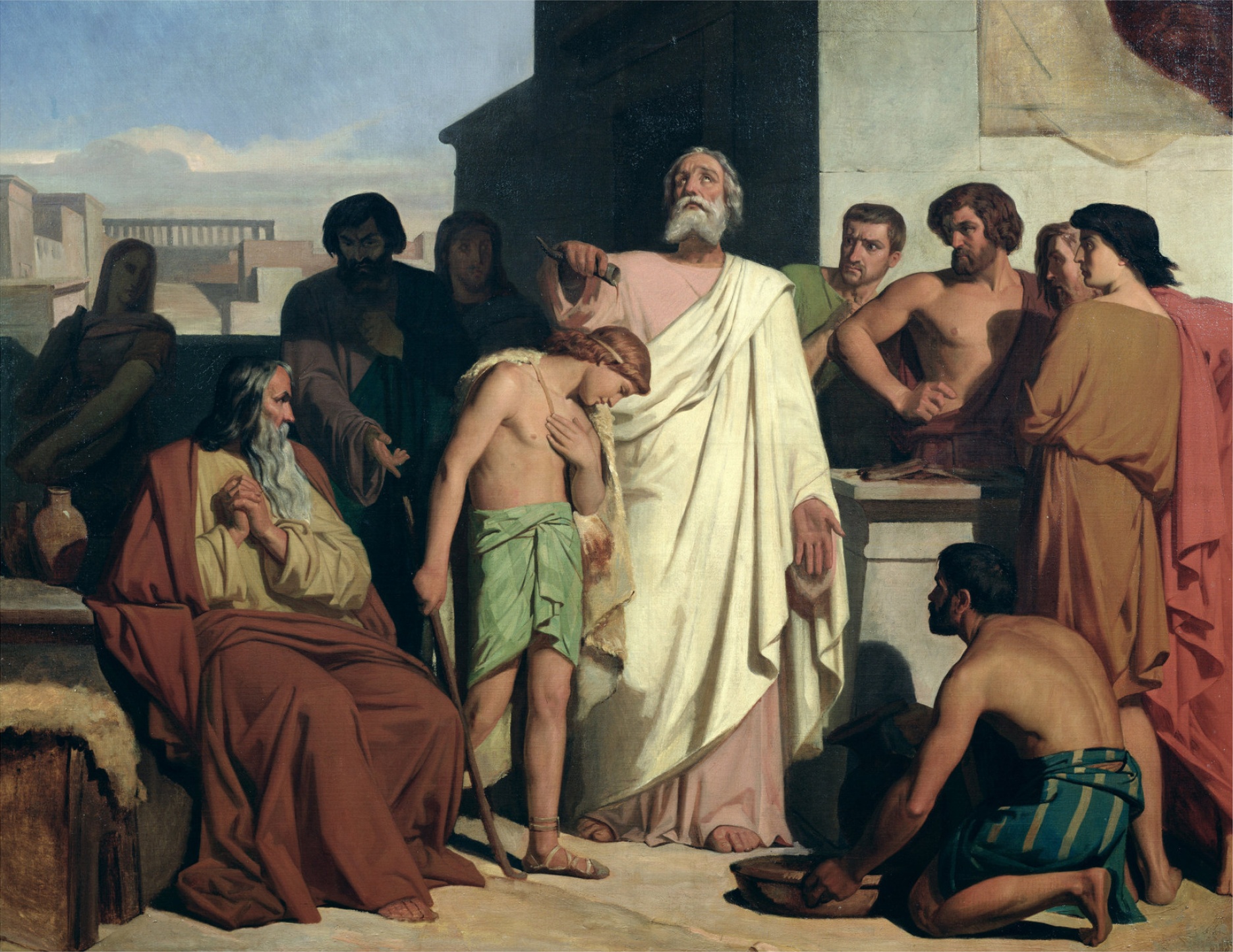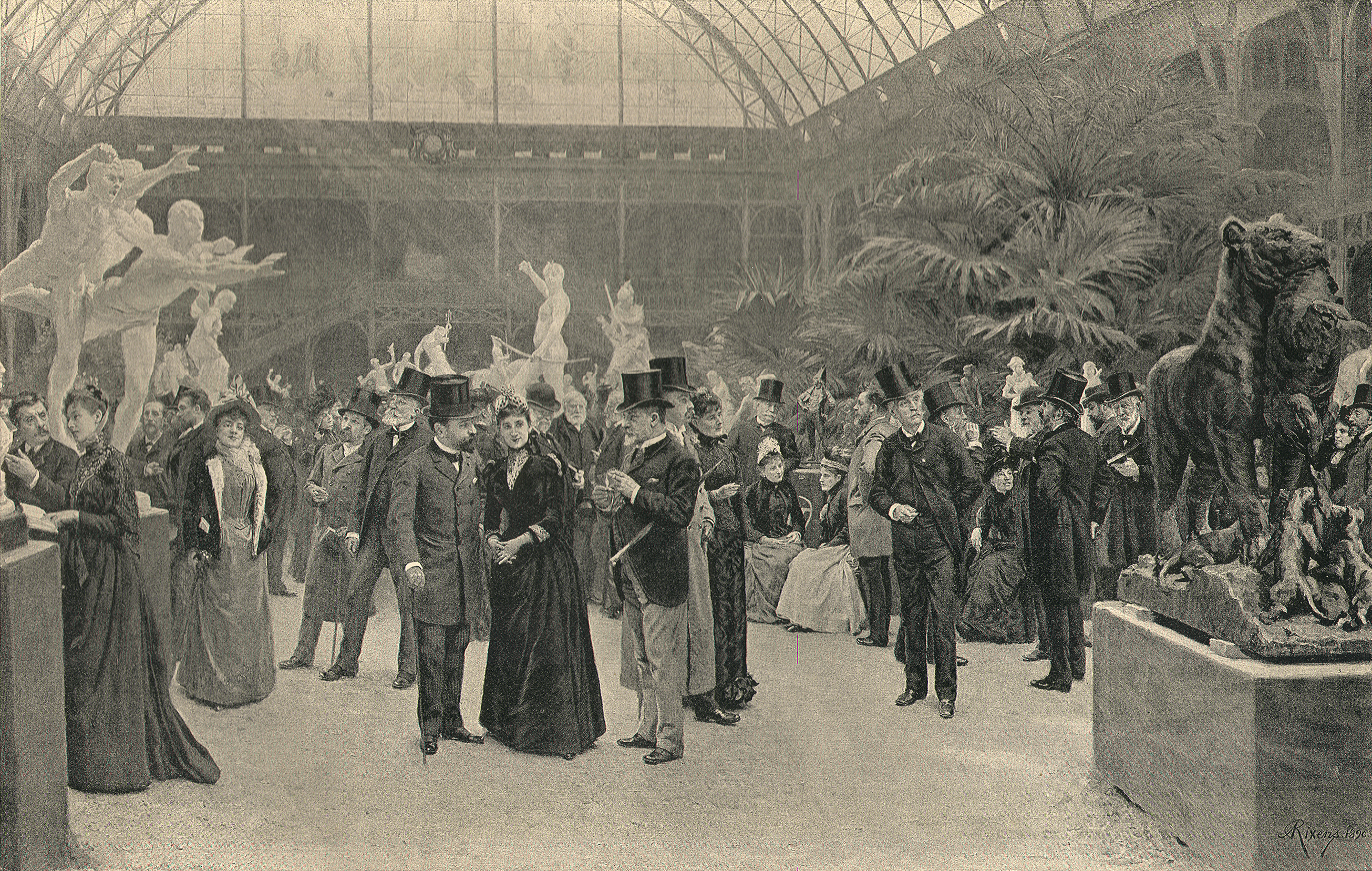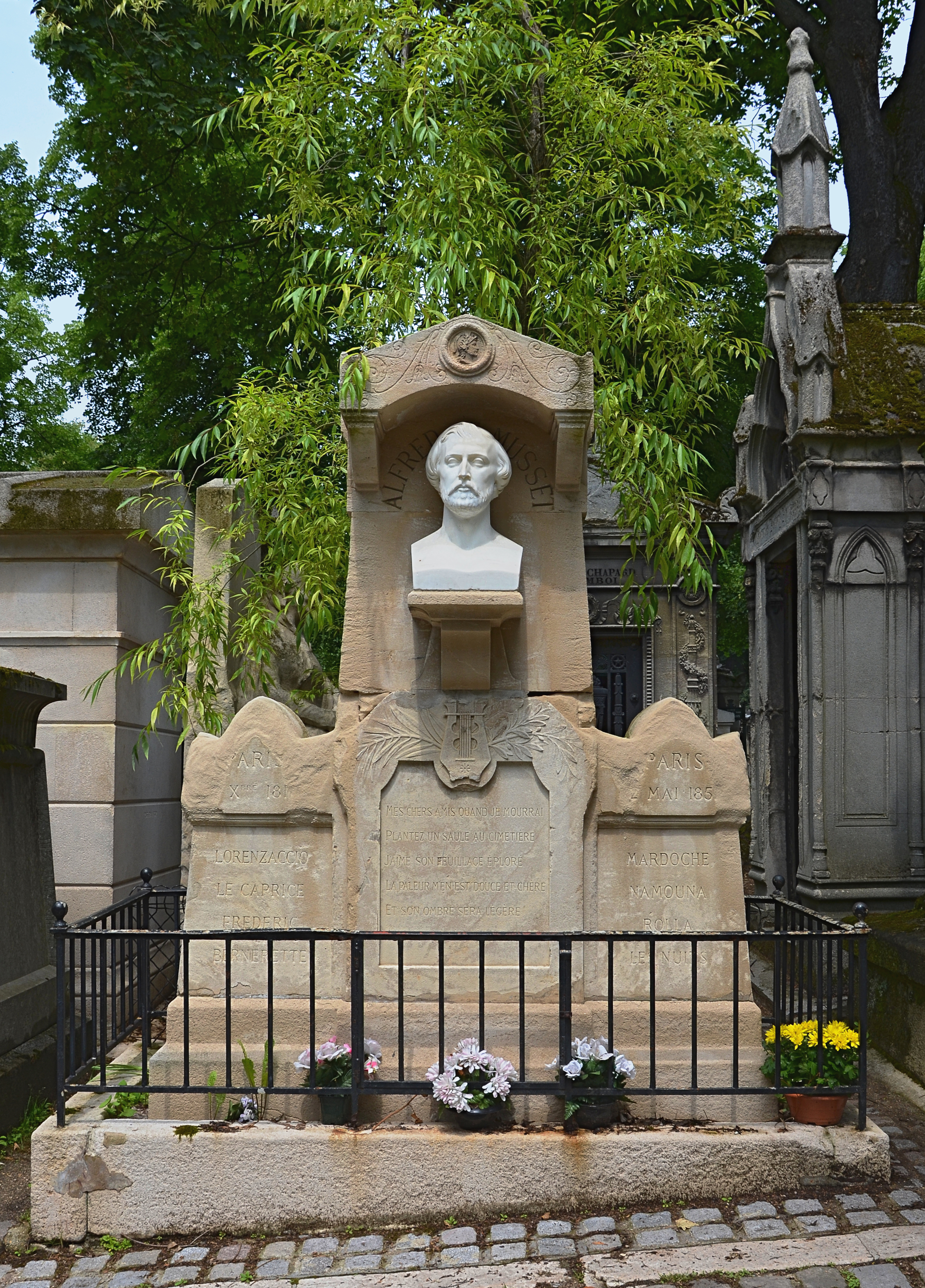|
Paul-Léon Jazet
Paul-Léon Jazet (13 June 1848 – 1918) was a French painter born in Paris, the son of the engraver Alexandre-Jean-Louis Jazet (1814–21 February 1897). For much of his career, he was mostly known for genre scenes, portraits and military subjects. Career After a pupillage with Félix-Joseph Barrias his career developed successfully and he became a regular exhibitor at the Paris Salon. The influence of the Franco-Prussian War is reflected in his many paintings with military subjects. These and his other works were often copied and marketed as photographs and prints by the prominent Paris-based art dealer Goupil & Cie. Paul-Léon Jazet made his debut in the Paris Salon in 1869, becoming a member in 1886.. The following are the titles of paintings he exhibited at the Salon during 1869–1881. Some English translations have been indicated where they are likely to be appropriate to the subject of an unseen painting. As a result of the Franco-Prussian War there was no Salon in 1871. ... [...More Info...] [...Related Items...] OR: [Wikipedia] [Google] [Baidu] |
Félix-Joseph Barrias
Félix-Joseph Barrias (13 September 1822 – 24 January 1907) was a French painter. He was well known in his day for his paintings of religious, historical or mythical subjects, but has now been largely forgotten. Artists who trained in his studio and went on to achieve fame include Edgar Degas, Gustave Achille Guillaumet and Henri Pille. Early years Félix-Joseph Barrias was born on 13 September 1822 in Paris. His brother was Louis-Ernest Barrias (1841–1905), who became a well-known sculptor. His father was a painter on porcelain, and taught Félix-Joseph Barrias, who proved to be an adept pupil and was able to earn his own living by the age of 16. Félix-Joseph Barrias then studied under Léon Cogniet. He won the Prix de Rome in 1844 with his picture of ''Cincinnatus Receiving the Deputies of the Senate''. This let him travel to Italy for further studies. In 1847 he exhibited at the Salon (Paris), Salon for the first time with his ''Young Girl Carrying Flowers'' and ''R ... [...More Info...] [...Related Items...] OR: [Wikipedia] [Google] [Baidu] |
Paris Salon
The Salon (), or rarely Paris Salon (French: ''Salon de Paris'' ), beginning in 1667 was the official art exhibition of the in Paris. Between 1748 and 1890 it was arguably the greatest annual or biennial art event in the Western world. At the Salon of 1761, thirty-three painters, nine sculptors, and eleven engravers contributed. Levey, Michael. (1993) ''Painting and sculpture in France 1700–1789''. New Haven: Yale University Press, p. 3. From 1881 onward, it was managed by the Société des Artistes Français. Origins In 1667, the royally sanctioned French institution of art patronage, the (a division of the Académie des beaux-arts), held its first semi-public art exhibit at the Salon Carré. The Salon's original focus was the display of the work of recent graduates of the École des Beaux-Arts, which was created by Cardinal Mazarin, chief minister of France, in 1648. Exhibition at the Salon de Paris was essential for any artist to achieve success in France for at le ... [...More Info...] [...Related Items...] OR: [Wikipedia] [Google] [Baidu] |
Franco-Prussian War
The Franco-Prussian War or Franco-German War, often referred to in France as the War of 1870, was a conflict between the Second French Empire and the North German Confederation led by the Kingdom of Prussia. Lasting from 19 July 1870 to 28 January 1871, the conflict was caused primarily by France's determination to reassert its dominant position in continental Europe, which appeared in question following the decisive Austro-Prussian War, Prussian victory over Austria in 1866. According to some historians, Prussian chancellor Otto von Bismarck deliberately provoked the French into declaring war on Prussia in order to induce four independent southern German states—Grand Duchy of Baden, Baden, Kingdom of Württemberg, Württemberg, Kingdom of Bavaria, Bavaria and Grand Duchy of Hesse, Hesse-Darmstadt—to join the North German Confederation. Other historians contend that Bismarck exploited the circumstances as they unfolded. All agree that Bismarck recognized the potential for new ... [...More Info...] [...Related Items...] OR: [Wikipedia] [Google] [Baidu] |
Goupil & Cie
Goupil & Cie is an international auction house and merchant of contemporary art and collectibles. Jean-Baptiste Adophe Goupil founded Goupil & Cie in 1850. Goupil & Cie became a leading art dealership in 19th-century France, with its headquarters in Paris. Step by step, Goupil established a worldwide trade in fine art reproductions of paintings and sculptures, with a network of branches and agents in London and other major art capitals across Continental Europe as well as in New York City and Australia. ''Les'' ''Ateliers Photographiques'', their workshop north of Paris, in Asnières-sur-Seine, Asnières, was instrumental in their expansion from 1869. The leading figure of Goupil & Cie was Jean-Baptiste Adolphe Goupil (1806–1893). His daughter Marie married the French artist Jean-Léon Gérôme. History Jean-Baptiste Adolphe Goupil Jean-Baptiste Adolphe Goupil, was born on March 7, 1806 in Paris. He was the son of Auguste Goupil, pharmacist, and Anne Lutton (1774–1849 ... [...More Info...] [...Related Items...] OR: [Wikipedia] [Google] [Baidu] |
Franc-tireurs
(; ) were irregular military formations deployed by France during the early stages of the Franco-Prussian War (1870–71). The term was revived and used by partisans to name two major French Resistance movements set up to fight against Nazi Germany during World War II. The term is sometimes used to refer more generally to guerrilla fighters who operate outside the laws of war.Rupert Ticehurst"The Martens Clause and the Laws of Armed Conflict", 30 April 1997, ''International Review of the Red Cross'', No. 317, pp. 125–134 Background During the wars of the French Revolution, a was a member of a corps of light infantry organised separately from the regular army. Franco-Prussian War ''Francs-tireurs'' were an outgrowth of rifle-shooting clubs or unofficial military societies formed in the east of France at the time of the Luxembourg Crisis of 1867. The members were chiefly concerned with the practise of rifle-shooting. In case of war, they were expected to act as militia o ... [...More Info...] [...Related Items...] OR: [Wikipedia] [Google] [Baidu] |
École Spéciale Militaire De Saint-Cyr
The École spéciale militaire de Saint-Cyr (, , abbr. ESM) is a French military academy, and is often referred to as Saint-Cyr (). It is located in Coëtquidan in Guer, Morbihan, Brittany. Its motto is ''Ils s'instruisent pour vaincre'', literally meaning "They study to vanquish" or, more freely put, "Training for victory". French cadet officers are called ''saint-cyriens'' or ''cyrards''. France's other most senior War college, military education institute is the ' (EdG) (School of Warfare), located in the ''École militaire'' complex, in Paris. French students who enter Saint-Cyr as cadets are about 21 years old, and undergo three years of training. All ESM cadets graduate with a Master of Arts or a Master of Science and are Officer (armed forces), commissioned officers. The academy was founded in Fontainebleau in 1802 by Napoleon. It was moved in 1806 to the buildings of the former ''Maison royale de Saint-Louis, Maison Royale de Saint-Louis'', in Saint-Cyr-l'École, west of ... [...More Info...] [...Related Items...] OR: [Wikipedia] [Google] [Baidu] |
Alfred De Musset
Alfred Louis Charles de Musset-Pathay (; 11 December 1810 – 2 May 1857) was a French dramatist, poet, and novelist.His names are often reversed "Louis Charles Alfred de Musset": see "(Louis Charles) Alfred de Musset" (bio), Biography.com, 2007, webpageBio9413."Chessville – Alfred de Musset: Romantic Player", Robert T. Tuohey, Chessville.com, 2006, webpage: . Along with his poetry, he is known for writing the autobiographical novel ''La Confession d'un enfant du siècle'' (''The Confession of a Child of the Century''). Biography Musset was born in Paris. His family was upper-class but poor; his father worked in various key government positions, but never gave his son any money. Musset's mother came from similar circumstances, and her role as a society hostess – for example her drawing-room parties, luncheons and dinners held in the Musset residence – left a lasting impression on young Alfred. An early indication of his boyhood talents was his fondness for acting imprompt ... [...More Info...] [...Related Items...] OR: [Wikipedia] [Google] [Baidu] |
Belle Époque
The Belle Époque () or La Belle Époque () was a period of French and European history that began after the end of the Franco-Prussian War in 1871 and continued until the outbreak of World War I in 1914. Occurring during the era of the French Third Republic, it was a period characterised by optimism, enlightenment, romanticism, regional peace, economic prosperity, conservatism, nationalism, colonial expansion, and technological, scientific and cultural innovations. In this era of France's cultural and artistic climate (particularly in Paris of that time), the arts markedly flourished, and numerous masterpieces of literature, music, theatre and visual art gained extensive recognition. The Belle Époque was so named in retrospect, when it began to be considered a continental European " Golden Age" in contrast to the horrors of the Napoleonic Wars and World War I. The Belle Époque was a period in which, according to historian R. R. Palmer, " European civilisation a ... [...More Info...] [...Related Items...] OR: [Wikipedia] [Google] [Baidu] |
Art Nouveau
Art Nouveau ( ; ; ), Jugendstil and Sezessionstil in German, is an international style of art, architecture, and applied art, especially the decorative arts. It was often inspired by natural forms such as the sinuous curves of plants and flowers. Other characteristics of Art Nouveau were a sense of dynamism and movement, often given by asymmetry or whiplash lines, and the use of modern materials, particularly iron, glass, ceramics and later concrete, to create unusual forms and larger open spaces.Sembach, Klaus-Jürgen, ''L'Art Nouveau'' (2013), pp. 8–30 It was popular between 1890 and 1910 during the Belle Époque period, and was a reaction against the academicism, eclecticism and historicism of 19th century architecture and decorative art. One major objective of Art Nouveau was to break down the traditional distinction between fine arts (especially painting and sculpture) and applied arts. It was most widely used in interior design, graphic arts, furniture, glass ... [...More Info...] [...Related Items...] OR: [Wikipedia] [Google] [Baidu] |
Loïe Fuller
Loie Fuller (; born Marie Louise Fuller; January 15, 1862 – January 1, 1928), also known as Louie Fuller and Loïe Fuller, was an American dancer and a pioneer of modern dance and theatrical lighting techniques. Auguste Rodin said of her, "Loie Fuller has paved the way for the art of the future." Biography Early life and debut Marie Louise Fuller was born on January 15, 1862, in Fullersburg, Illinois, on a remote farm conveniently linked to Chicago by a newly-constructed plank road. When Fuller was two, her parents Reuben Fuller and Delilah Eaton moved to Chicago and opened a boarding house. Her early exposure to the arts came through her parents - her father was a skilled fiddler and dance caller, while her mother had aspired to be an opera singer before marriage. Fuller's parents took her to the Progressive Lyceum, a hub of Freethought, on Sunday mornings. Fuller debuted on the stage as a toddler, performing a variety of dramatic and dance roles in Chicago. Her first perfo ... [...More Info...] [...Related Items...] OR: [Wikipedia] [Google] [Baidu] |






